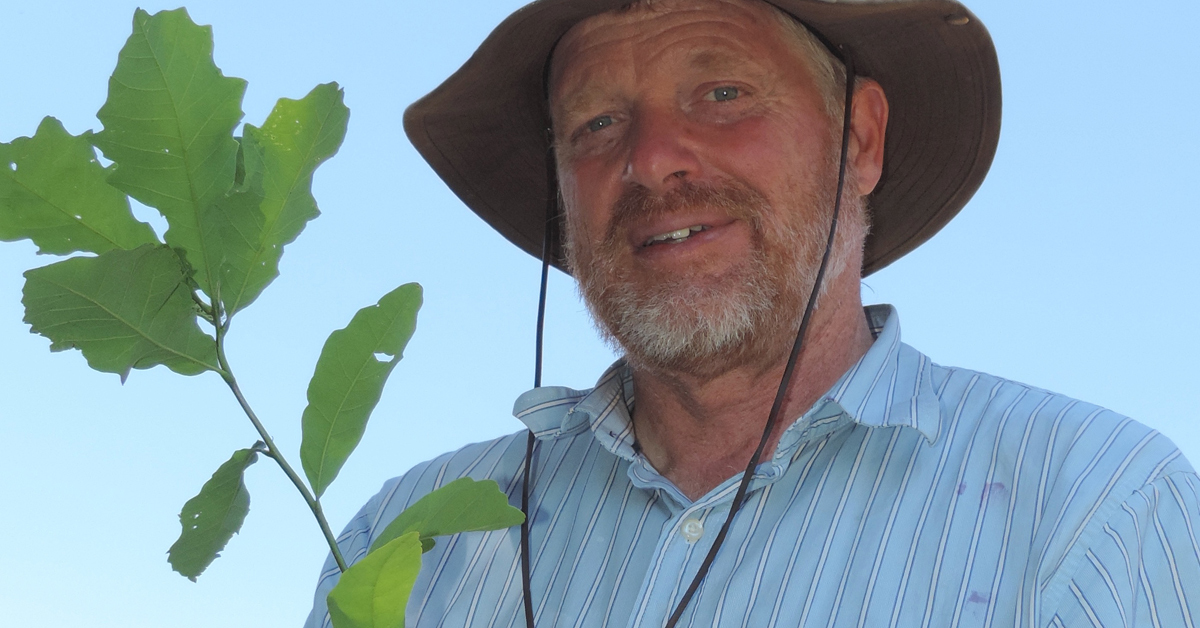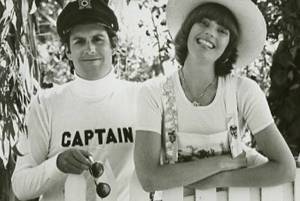By DIANNA TROYER
For Dave Luker, every day is a reason to celebrate trees, not just Arbor Day on the last Friday of April.
The Pocatello arborist grew up beneath the sheltering canopy of massive oaks in the southeastern Idaho town of Filer. As an adult, he became enchanted with deciduous hardwoods of the Midwest.
“When I was younger, I did a mission for my church in Ohio and saw an amazing variety of deciduous hardwoods,” said Luker, 57. After returning home and doing research, he realized many of those Midwestern trees would also grow well in the Northwest, including Buckeye, Beech, Yellowwood, Red-flowering Chestnut, and Turkish Hazel and Oaks.
Of all those varieties, the tree that captivated him the most was the oak of his childhood. When he stopped by a greenhouse in Pocatello and was told oak trees cannot grow in southeastern Idaho, he had to laugh.
“I grew up in Filer, and oak trees are everywhere because settlers from Missouri planted them,” he said.
That incident in 1983 compelled him to start developing oak hybrids at his home nursery. Working as a landscaper at a local hospital, and later nurseries, he began planting oak trees throughout Pocatello that are thriving today.
One of the most eye-catching oaks he planted is a cross of a big bur oak and a little live oak, bred by Dr. Walter Cottam at the University of Utah.
“Most people think it’s a holly bush because it has leathery leaves that stay green through December,” he said of the tree growing near the former Bannock Memorial Hospital. “It grows as a small shrub without irrigation but can reach 35 feet tall with irrigation. It’s beautiful.”
Since opening his own business, WestWood Growers Conservation Nursery, Luker has become the only wholesale/retail nursery in Idaho with more than 60 varieties of oak trees. He sells about 5,000 a year.
To stimulate seedling growth, Luker plants acorns and other trees in Scottish Air-Pots, reusable plastic containers with perforated holes that encourage lateral root growth. He also uses mycorrhizal fungi in a liquid to stimulate nutrient absorption in a tree.
“To plant a tree, ideally you should colonize the planting site with wood chips for up to a year. You can put down cardboard and pour a free, 25-gallon pot of chips on it that we have here. When you plant a tree in a well prepared site like that, it will really take off.”
Besides providing oak trees of all sizes to landscape companies and consumers, Luker gathers five tons of acorns from mid-September to early November, to sell to nurseries.
“Idaho is the only place in the country without weevil,” he said. “The acorns I pick up in Utah are heated in 120-degree water in a big pot for 30 minutes, to kill the weevil without harming the acorn.”
Not all of his oak trees and weevil-free acorns end up in nurseries. After wild turkeys were introduced to the region, he partnered with local members of the National Turkey Federation to plant thousands of oak trees in the region.
“Turkeys eat acorns in the fall and the male catkins in spring,” said Luker. “Flocks do well when oak trees are around.”
He also advocates planting trees in shelterbelts on ag land.
“Shelterbelts are a worthwhile investment,” he said. “Livestock does better with shade and shelter, and certain crop yields improve with a windbreak. You need at least three rows with a dense shrub, evergreen, and hardwood.”
Luker advocates planting trees that are less common.
“It ultimately increases the diversity of our plant communities and limits the risk of major pest attacks.”









